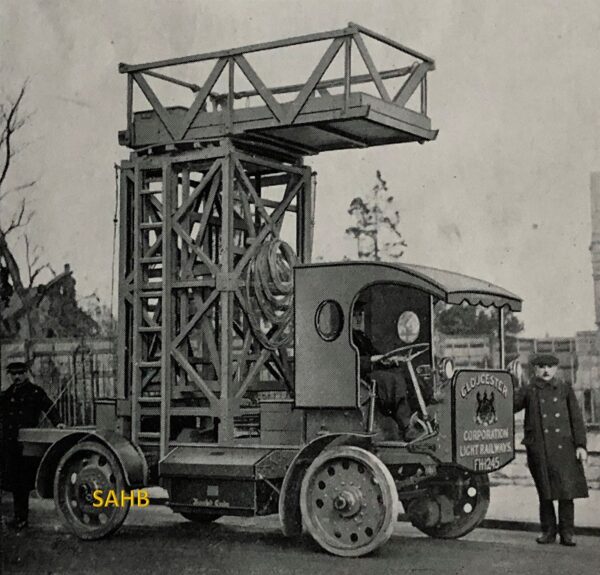
The “Orwell” name of this battery-powered tower wagon, designed for the maintenance of the overhead wires of electric tramways, may be unfamiliar – but the clue is in the name. The River Orwell flows through Ipswich in Suffolk and was the location of that major British agricultural manufacturer Ransomes, Sims & Jefferies, who made the “Orwell” vehicles.
Ransome, Sims & Jefferies were perhaps best known as manufacturers of steam traction engines. But their interests extended far wider; they also made trolleybuses, ploughs, lawn mowers, combine harvesters and other tilling equipment. And they made Direct Current electric motors in a wide range of sizes, and electric forklift trucks and tractors. They manufactured aeroplanes during the First World War. Their base, set up in 1845, was named Orwell Works.
The company was started by Robert Ransome (1753–1830), who was born into a Quaker family in Norfolk, and became an apprentice to an ironmonger in Norwich. As a result of a mishap in his foundry in 1803, molten metal came into contact with cold metal, making the metal surface extremely hard, and Robert discovered the process of chilled casting, which he used to refine the manufacture of ploughshares, advertising them as ‘self-sharpening’ ploughs. After about 1841 the manufacture of ploughs and other agricultural machinery was supplemented by production of portable, traction and other steam engines and thrashing machines.
In 1902 Ransomes produced the first commercially available powered lawn mower, driven by an internal combustion petrol engine.
And now we come to World War I, when Ransomes began building “Orwells”, battery-electric commercial road vehicles. In the 1910s there were electric road vehicles operating in Britain, but most were of American or European, particularly German, manufacture, and with the First World War cutting off supplies from the Continent, Ransomes decided to begin production of a suitable replacement. The construction was quite simple, with an electric motor mounted on a plate attached to the stub axle of each front wheel. Helical gearing then drove the front wheels. 40 batteries were mounted in two panniers, one on either side of the chassis, which could easily be pulled out on a system of rollers, to aid maintenance.
Ransomes regularly sold vehicles to local authorities. These “Orwells” used regenerative braking, where the motor was driven as a dynamo to slow the vehicle and put power back into the batteries – a very modern advantage of electric vehicles even today.
A review of electric vehicle usage by municipalities in 1922 showed that Ransomes were the second most popular type, with some 120 vehicles in operation, only exceeded by the 234 vehicles supplied by Edison of Detroit. These vehicles proved to be highly reliable. One of the vehicles supplied to Ipswich Corporation in 1915, and used constantly thereafter, was still working well in March 1934.
Image courtesy of The Richard Roberts Archive: www.richardrobertsarchive.org.uk







Leave a Comment